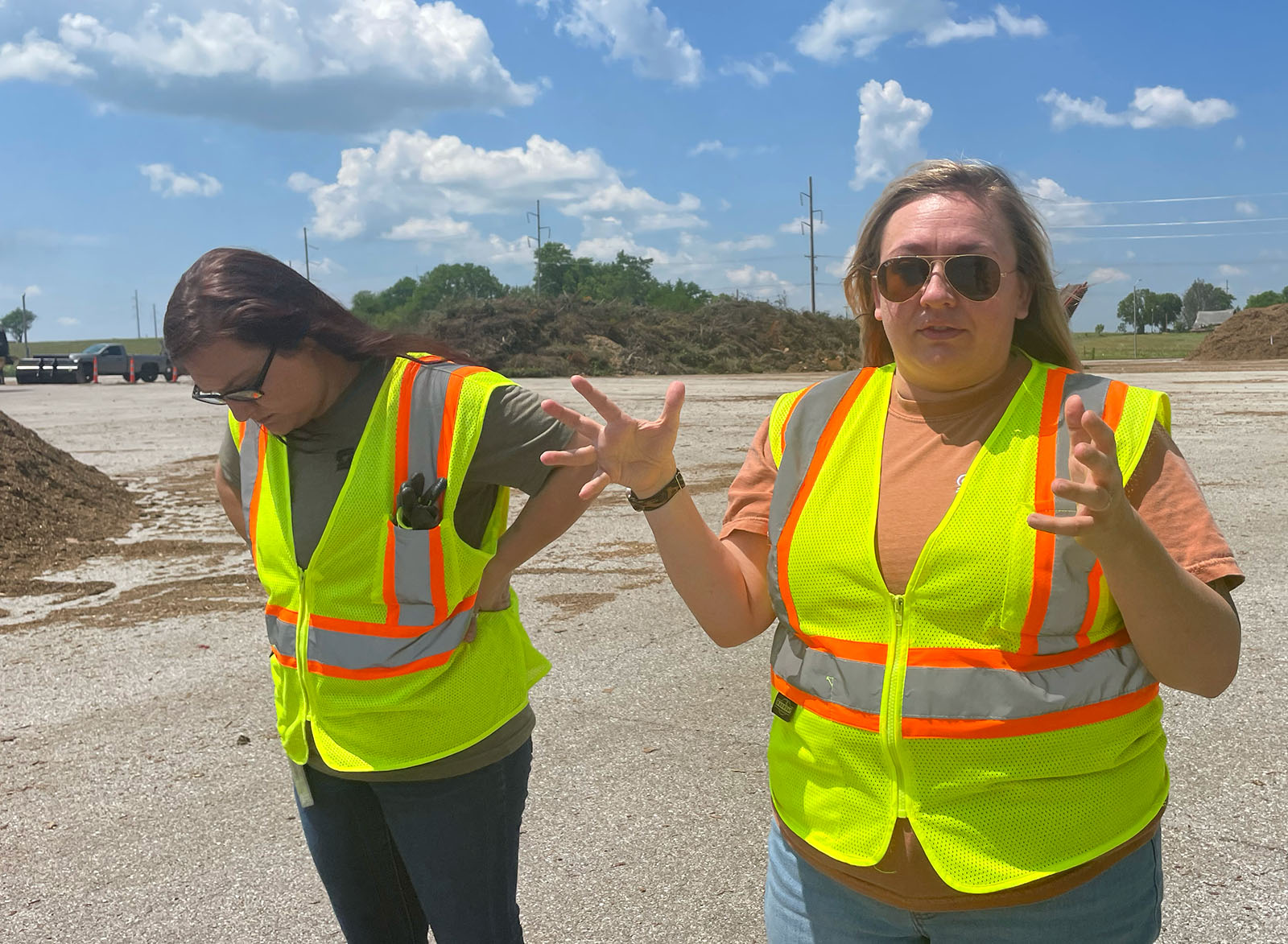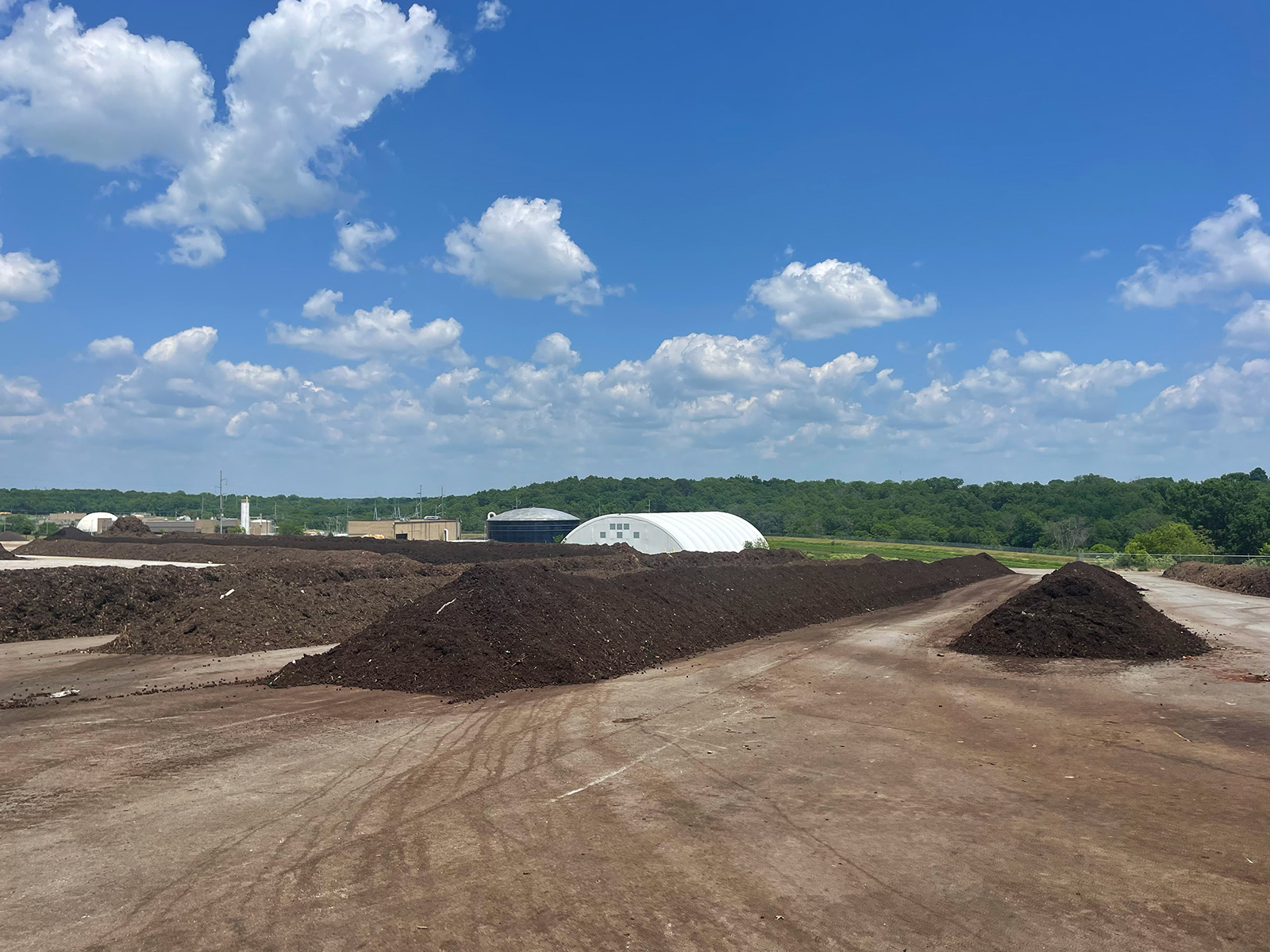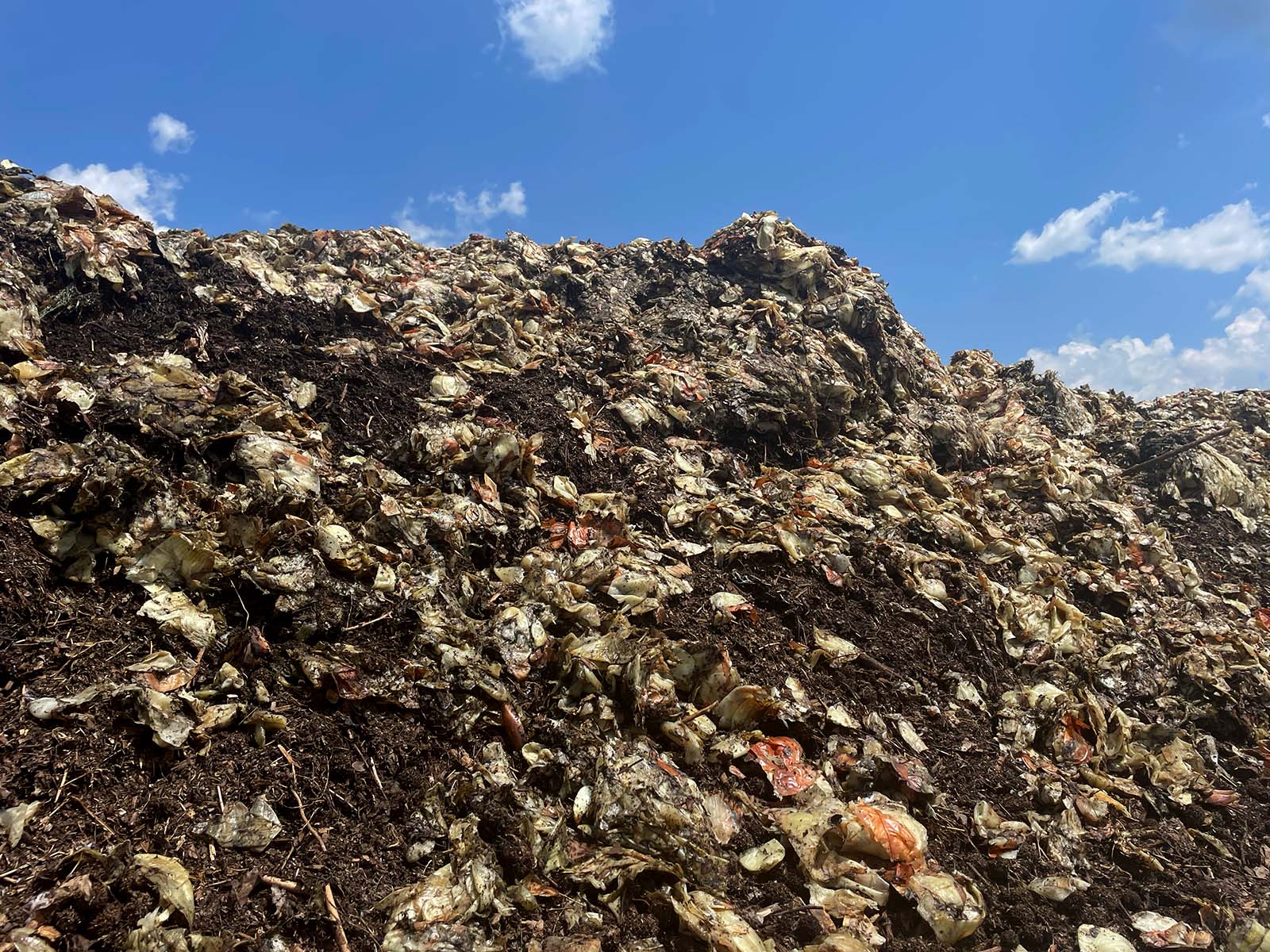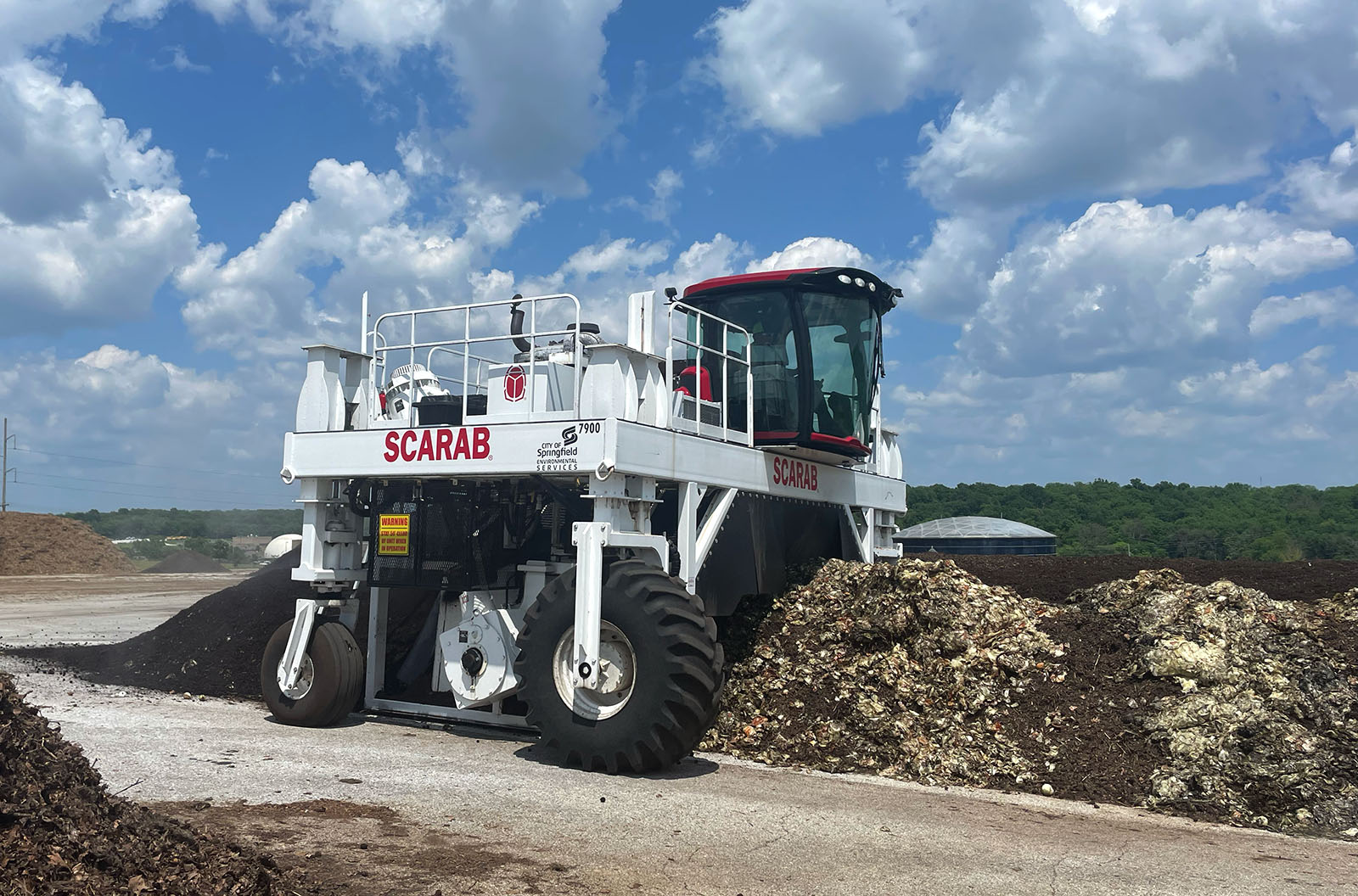Visit Springfield’s Yardwaste Recycling Center on the right day (or the wrong day, depending on your olfactory sensitivities) and you’re liable to smell a mound of rotting onions.
On a particularly hot summer afternoon, should such an onion pile catch enough sunlight to get cooking, Ashley Krug, a Springfield Environmental Services staffer, said the whole place starts to smell a little like the Fourth of July.
On May 24, there was a pile of onions tucked behind a larger mound of brush and grass clippings. These runny onions are the rejects that never make it to the top layer of your green bean casserole. They were trucked to the Brookline facility from 4455 E. Mustard Way, home of the McCormick & Co. plant where French’s Crispy Fried Onions have been produced since 2008.
Along with Hiland Dairy, which typically trucks over industrial-sized biodegradable teabags twice a week, the French’s onions are among the rare pre-consumer food products that the City of Springfield folds into acres of compost it creates and sells back to citizens. This fall, your bad bananas could join the party.
Pilot program set to launch this fall

In an effort to divert tons more food waste from the landfill, the city is planning to expand its compost collection efforts thanks to a $286,100 grant from the U.S. Department of Agriculture. The funding is dedicated to municipal efforts designed to reduce and divert food waste from landfills.
Springfield residents don't have many options right now to avoid sending food to the landfill. The nonprofit Springfield Compost Collective picks up food waste from businesses and homes for a fee and offers community compost bins in a few neighborhoods. Currently, the city's only receptacle for spoiled food is its landfill. Krug, the market development coordinator with Environmental Services, said that's the last place most food waste needs to be.
Krug said the USDA money will fund a pilot program envisioned as an expansion of the city’s current Dish to Dirt home composting project. That program has provided hundreds of applicants with an at-home composter and lessons to best reuse their own food and yard waste in their own backyards. But not everyone has a backyard, Krug said.
“Lots of people can't have a composter in their apartment building, or they have a landlord that doesn't want that,” she said. “And we get lots of questions from people living in apartments right now who are like, ‘I want to do more, but I don't have that option.'”
The pilot program, Krug said, will ideally offer a new option to about 1,000 Springfield residents, as well as a handful of restaurants, schools and businesses that will be selected to participate. Krug said it’s been a win-win for the city and the two companies that currently bring pre-production food waste to the compost yard. The producers don’t have to pay landfill fees to dump their waste, and the landfill is spared from taking in more food waste at a time when Springfield and surrounding communities are filling it with more and more trash.
Program would give residents new options to dispose of food waste

In late May, Springfield Environmental Services employees got the green light to start spending the grant money. Mickaela Barclay, an education and outreach specialist with Environmental Services, said she’s thinking compost bins will be the first items added to the city’s shopping cart — hundreds of them. And maybe also a big yellow Dumpster that would be placed at the Yardwaste Recycling Center that would, if Krug’s dreams came true, be banana-shaped.
The goal, Barclay and Krug said, is to bring about 1,000 more residents into the crusade to reduce the amount of food waste that now finds its forever home in the city landfill. Around 1,100 tons of trash — or some seven Statues of Liberty — is hauled to the Noble Hill Sanitary Landfill every day of the year that it’s open.
Trials by the pile
Last year, Krug told the Hauxeda that food waste accounts for roughly 12 percent of that total. That’s a total that was based in part on national trends and also on a state-led examination that took place in the late 2010s. In May 2023, she said more recent information pegged the percentage at closer to 14.
“We've done some additional studies (recently), and food waste is just massive,” Krug said.
Enter the Yardwaste Recycling Center, which recently got the permits to accept post-production food waste, like the yellowing romaine lettuce Krug brought from her home to the center on May 24.

At maximum capacity, the Yardwaste Recycling Center right now could take on about 9,000 tons of food waste a year, Krug said. That's “nowhere near” the 30,000-40,000 annual tons getting hauled to the landfill every year, she said, but it’s a necessary dent Environmental Services is trying to make. The center has the acreage and potential partnership with the neighboring wastewater treatment plant to expand beyond that 9,000 tons of food waste, but Krug said they want to see what they learn from the pilot program this fall.
Barclay will be leading that effort, and both she and Krug said a major part of that will involve educating the public on what’s best and not so great to add to the compost mix. They’re in the midst of an education process of their own via a trial-by-pile test run at the yard waste center. Alongside one of the compost rows stood a mound of yard waste and countless items, from edible spoons to biodegradable bags to paper straws. Barclay and Krug are checking it weekly to see what is living up to its eco-friendly marketing and what isn’t. The allegedly biodegradable bags, they regret to inform you, aren’t biodegrading all that much yet.
Barclay said she hopes the public buys in when the offer of 1,000 free compost bins goes out this fall. The bins are meant to trap smells and seepage until they’re ready to be unloaded, and the Environmental Services will offer a number of places to unload them. There will be designated compost drop-off days at all city recycling centers, and the Yardwaste Recycling Center will accept food waste this fall during its normal hours of operation. Whether it will be accepted in a yellow banana Dumpster or not remains to be seen.
“Hopefully it just starts that conversation about how much waste we generate, and then gives people the opportunity to feel really good about what they're doing with it instead,” Krug said.
Preparing to accept more waste

At the Yardwaste Recycling Center, the answer is that you compost it. On May 24, a front-end loader scooped up the runny onions and Krug’s old lettuce and radishes. Then it dropped them atop a football field-length row of yard waste. Jeff Grimm, the center’s supervisor, then climbed into an industrial composter called a SCARAB and piloted it over the oniony row.
The SCARAB sliced and diced the mound while also slow-cooking it, heating the material to a temperature in the 130-160 degree range. Once cooled down, the material is run through one of several sifting devices before it ends up in, say, a gardener’s flatbed truck. Steam rose from the row after Grimm gently churned and burned it.
“It wasn’t as burger-y smelling this time,” Krug said, a little disappointed. It did smell earthy, a sign that the nitrogen-carbon balance was in the one-part-to-three-parts sweet spot range.
Grimm said he’ll have to do some test runs on his composting recipe once the center begins accepting more food waste this fall. He’s looking forward to working with some new, old ingredients.

